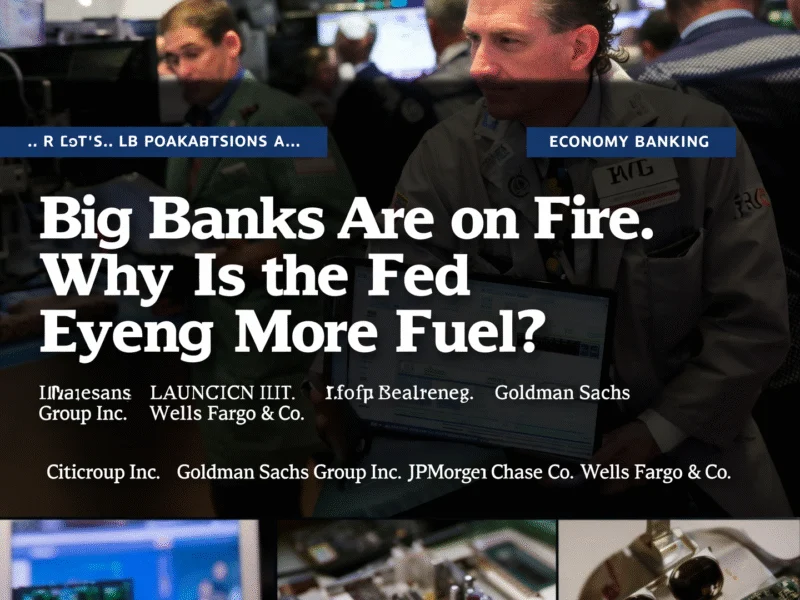Wall Street Reassesses Credit Controls After Auto Sector Bankruptcies
The recent bankruptcies of U.S. auto parts supplier First Brands and car dealership Tricolor have sent shockwaves through Wall Street, prompting major financial institutions to re-examine their risk controls and credit exposure. JPMorgan Chase CEO Jamie Dimon’s warning about seeing “more cockroaches” has amplified concerns about potential credit stress in specific sectors, even as most banks maintain that overall U.S. borrower credit quality remains robust. According to analysis from IMD Solution’s coverage of the First Brands and Tricolor bankruptcies, these collapses represent early warning signs in what has been a prolonged credit bull market.
Dimon’s stark comments came during JPMorgan’s third-quarter earnings call, where the bank revealed it had written off $170 million related to the Tricolor bankruptcy. “When you see one cockroach, there are probably more, and so everyone should be forewarned of this one,” Dimon stated, adding that First Brands fell into the same category. The JPMorgan CEO acknowledged the exposure as “not our finest moment” and emphasized that the bank has thoroughly reviewed its controls to prevent similar situations.
Broader Implications for Credit Markets
The twin September collapses have affected specific segments of Wall Street’s multitrillion-dollar credit machinery, forcing some debt investors to reduce exposure to certain sectors amid concerns about weakness in consumer and auto lending. This comes at a time when technological innovations in other sectors continue to advance rapidly, highlighting the uneven nature of economic progress across different industries.
Dimon pointed to the extended credit market bull run since 2010 as potentially creating excesses in the system. “These are early signs there might be some excess out there because of it. If we ever have a downturn, you’re going to see quite a few more credit issues,” he warned. This assessment suggests that while current problems may appear isolated, they could signal broader vulnerabilities in the credit ecosystem.
Bank Exposure and Response Strategies
Several major financial institutions have disclosed their exposure to the bankrupt companies while emphasizing their ability to absorb potential losses. Jefferies and UBS have both confirmed exposure to First Brands but described the fallout as limited and “readily absorbable.” The situation has prompted increased scrutiny into how exposed fund managers might be to troubled borrowers, particularly in the auto sector.
The First Brands case has taken an especially dramatic turn, with a creditor claiming that as much as $2.3 billion “simply vanished” from the bankrupt auto parts supplier. The U.S. Department of Justice has opened an investigation into the matter, adding legal complexity to the financial implications. Meanwhile, as central banks like the Bank of England focus on productivity growth, the credit market disruptions highlight the challenges in maintaining financial stability across sectors.
Contrasting Views from Major Financial Institutions
Despite the high-profile bankruptcies, many major financial institutions maintain a positive outlook on overall credit quality. BlackRock Chief Financial Officer Martin Small noted that “teams are generally seeing strong credit quality from borrowers. Even in syndicated loan markets, default rates have been declining.”
Small distinguished between the current cases and broader market stress, stating: “The reported cases look more like idiosyncratic pockets of stress. They don’t look like broad stresses on asset-based finance or consumer credit.” However, Reuters has reported that BlackRock recently requested to redeem some money it invested in a Jefferies fund exposed to First Brands debt, indicating some caution despite public assurances.
Citigroup’s finance chief Mark Mason echoed this sentiment, stating the bank sees “no particular distress signs in corporate credit” and has no exposure to the recent bankruptcies. “We don’t have any exposure to any of those things that you’ve been reading about – either directly or indirectly,” Mason emphasized.
Risk Management and Due Diligence Responses
Goldman Sachs CFO Denis Coleman highlighted the bank’s consistent underwriting standards and robust due diligence processes. “We have ongoing monitoring and reporting diligence underlying collateral. We manage the granularity of our portfolio within our own internally set diversification and concentration limits,” Coleman explained, noting that Goldman has no exposure to First Brands or Tricolor debt.
The responses from major institutions suggest a bifurcated approach to the current situation: while acknowledging specific problems, most maintain that their risk management frameworks are sufficient to handle isolated cases. This perspective aligns with broader automotive industry challenges, including GM’s recent $16 billion hit as EV tax credits end, indicating sector-specific pressures rather than systemic issues.
Market Implications and Future Outlook
The First Brands and Tricolor bankruptcies have raised important questions about credit market conditions after years of easy money and low default rates. While most major banks describe the situations as isolated incidents, Dimon’s “cockroach” analogy suggests concerns about what might be hidden in less visible corners of the credit markets.
As the situation develops, investors will be watching for whether these bankruptcies represent the beginning of a broader trend or merely idiosyncratic events in specific sectors. The coming quarters will be crucial in determining whether current risk management practices across financial institutions are adequate to handle potential increases in credit stress, particularly if economic conditions deteriorate.



